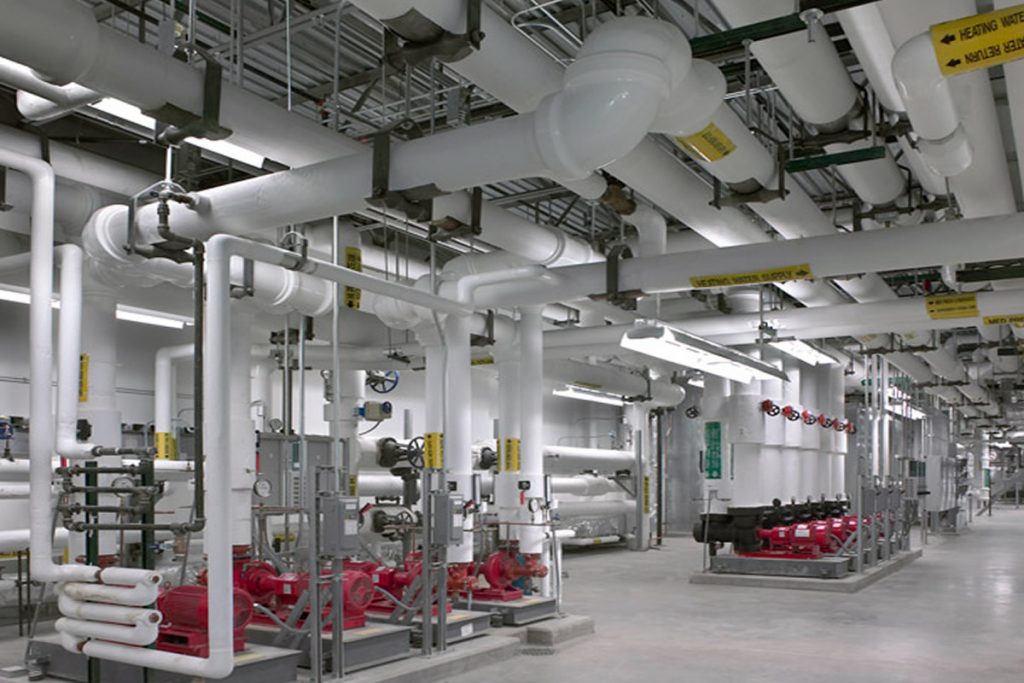In the realm of mechanical engineering, the drive toward energy efficiency is constant. One technology that plays a critical role

Plumbing system design comprises three significant classes: gravity depleted waste frameworks, pressure-driven frameworks, and siphoned squander.
The gravity channel frameworks incorporate slanted lines, which should have a characteristic grade line. Also, the gravity-depleted frameworks require vent lines for the whole framework, to consider the open divert stream in the waste organization. Gravity plan in numerous associations falls in the extent of the common office.
The tension-driven frameworks incorporate hot and cold-water supply lines in different areas in the structure.
Finally, siphoned squander frameworks incorporate all waste lines that should be driven by pressure rather than by gravity. All siphoned squander frameworks should run in twofold contained piping frameworks.
Good plumbing design consultant in California always understanding the essentials is critical for This is a robust MEP framework.
The main role of the plumbing system design is to give sufficient water tension consistently in all pieces of the structure. This involves conveying the water at the right tension in all areas and taking care of the release.
The grouping of plumbing frameworks can be isolated into four classes: the gravity tank framework, the hydro-pneumatic tank framework, the supporter siphon framework, or a blend of the over three.
Multi-story structures can typically be separated into zones of water pressure control. The lower a few stories can, by and large, be provided straightforwardly from the strain in the public central pipe.
Upper stories, normally in gatherings of five to eight stories, can be provided from pressure-supported primary risers through a tension decrease valve for each gathering. Frameworks can be up-taken care of or down taken care of.
Up-took care of frameworks generally begins from a strain promoter siphon set or hydro-pneumatic tank in the cellar of the structure. In an extremely tall structure, floors ought to be separated into zones of maybe 15-20 stories. Every one of these will have its siphoning framework. This serves to wipe out the exceptionally high tensions that outcome from high water heads and diminishes line and siphon sizes.
Down-took care of frameworks generally begins from a roof gravity tank. These are utilized when a structure is excessively tall for an up-feed framework.
Picking a plumbing system design relies upon the stature of the structure and the tension needed for working the installations.

There are two distinct kinds of water supply system in a plumbing system design one might utilize: sub water supply system, which is intended to be put inside the water in the tank, and a regular radiating water supply system, which ought to be set in the siphon room.
In the case of utilizing a traditional water supply system, the power source from each tank to the water supply system ought to be put in a sump.
If no sump is given and the power source is set say 6 creeps over the tank base. At whatever point the tanks are to be cleaned, a dewatering siphon should be gotten to eliminate the water in the dead volume of 6 inches.
In the case of utilizing a water supply system, give a profound sump (something like 24 inches), as these water supply systems are typically introduced upward, and the water channel is in the siphon and not at the base.
The siphon ought to be upheld exclusively by the conveyance pipe, which is rushed to a rib joined to a sleeve in the top of the tank. If the siphon is to be taken out for support, this plan permits the bolts to be scattered, permitting one to effortlessly lift the siphon out of the tank without depleting the water.
For this reason, a sewer vent should be set close to the conveyance pipe. Such a water supply system should not be mounted on the floor of the tank because the fixing bolts will penetrate the waterproofing layer of the tank.
All siphon rooms ought to as a general rule have a plan for floor seepage; water supply systems consistently spill. The most ideal way of doing this is to slant the floor towards a sump and introduce a dewatering siphon if the water can’t stream out by the gravity of the plumbing design.

There is a scope of decisions for the plumbing design; GI, CPVC (chlorinated PVC), HDPE (high-thickness polyethylene), and copper. Nowadays plastic (CPVC, HDPE) plumbing pipes are like others since they don’t rust, are light and simple to introduce, and are modest.
● Type K: thickest divider, comes in straight lengths, loops, and is utilized for underground stock when most prominent strength is required
● Type L: more slender dividers and comes in straight lengths or loops, normally utilized for most inside plumbing (generally normal)
● Type M: most slender and accessible in straight length as it were. Utilized where there is low tension, similar to branch supply, chilled water, and waste.
Utilized when water isn’t destructive, troublesome screw fitting gathering. Joined precisely with strung collars. • Plastic: utilized in neighborhoods for supply channeling. Is as yet confined by certain codes. Grows 3.5 occasions more than copper. Having an innate understanding of these things is critical for being a good plumbing design consultant in Los Angeles.
● Polyethylene (PE): plastic line and tubing
● Acrylonitrile Butadiene Styrene (ABS): plastic line, dark, utilized distinctly for channel lines − Polyvinyl Chloride (PVC): plastic line, white, utilized for supply
● Polyvinyl Di-chloride (PVDC): (alright for high temp water)
About Author
InnoDez